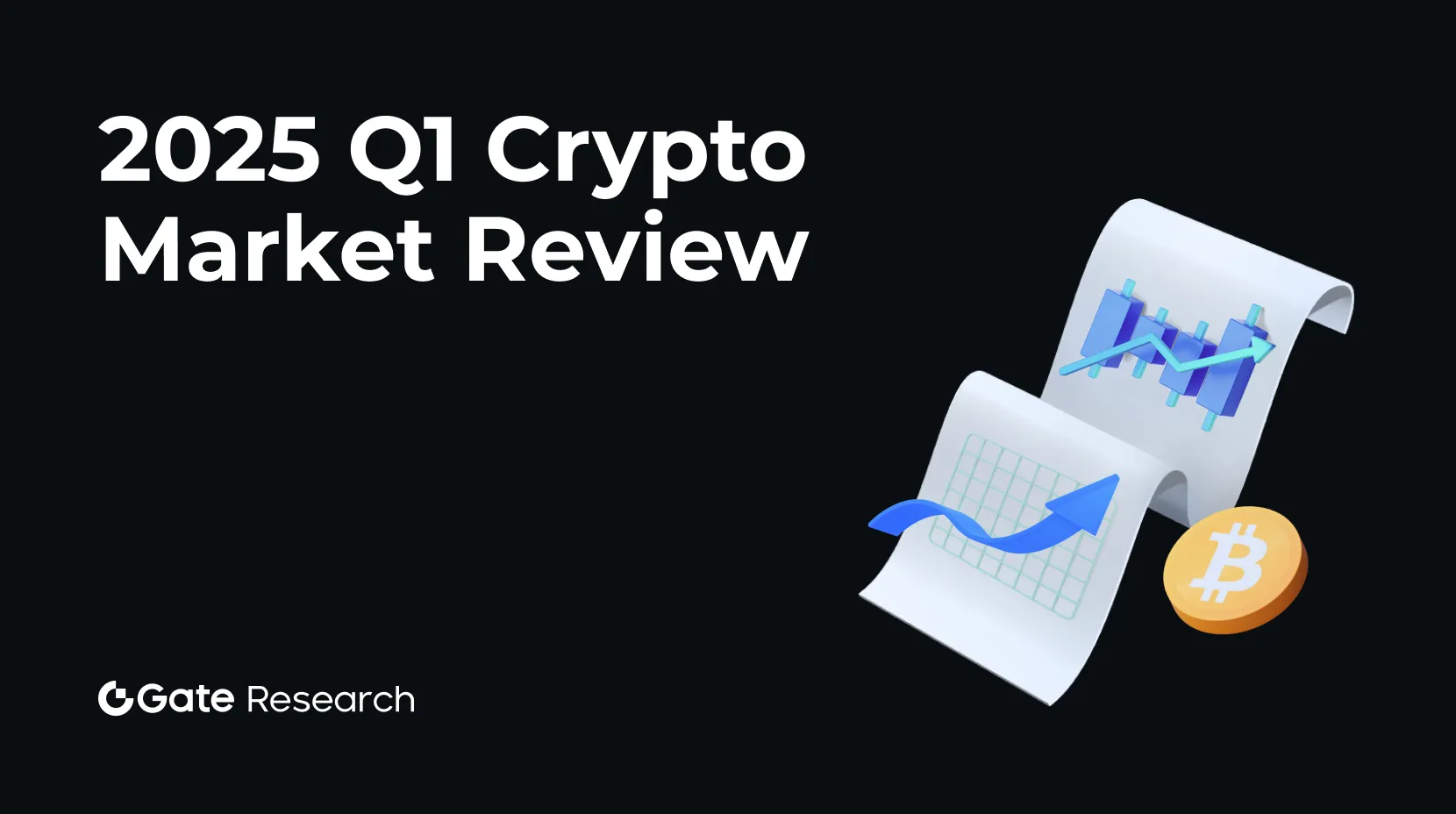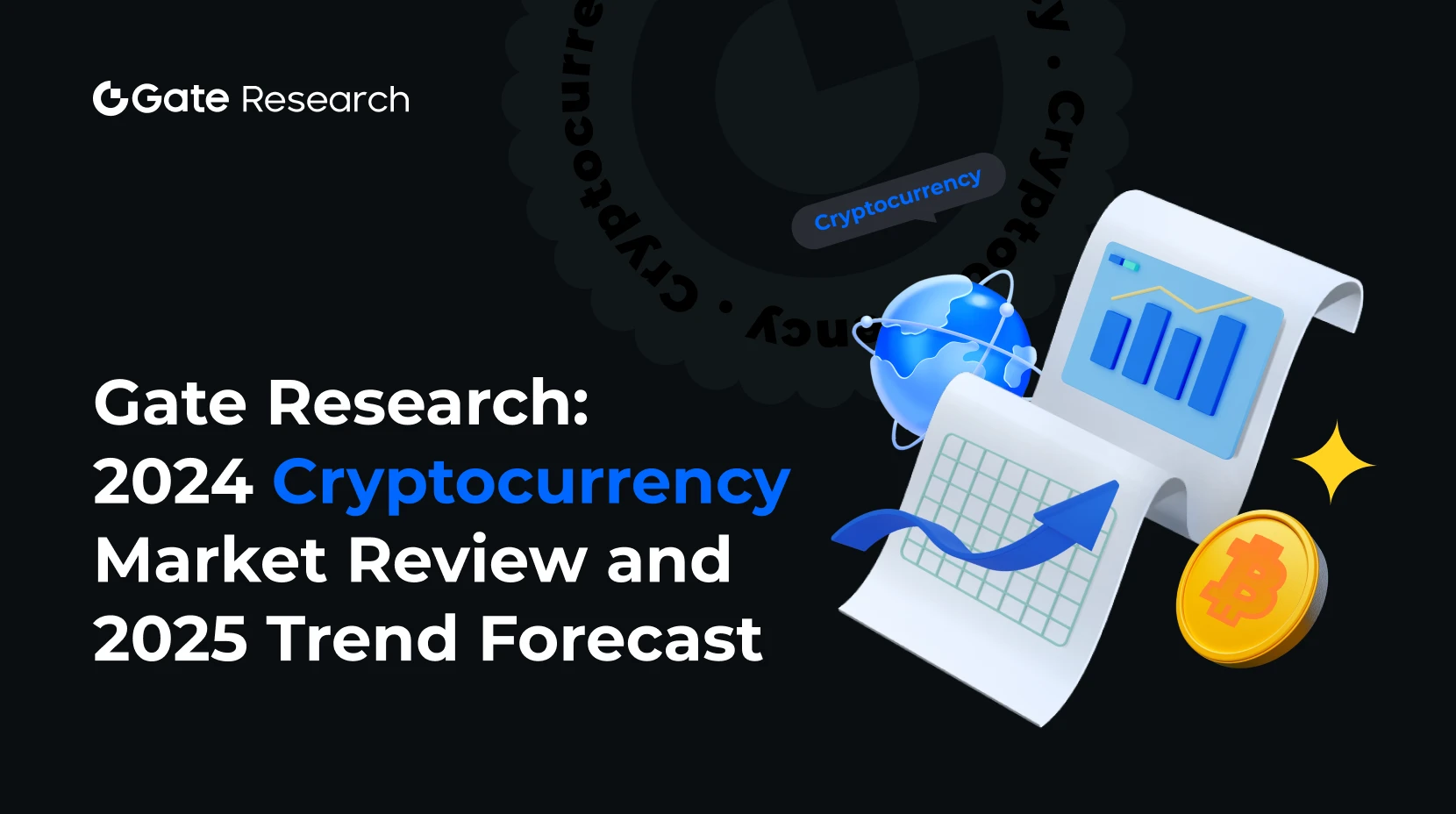Gate 研究院:2025 年 3 月 Web3 行业政策和宏观报告
Gate 研究院:2025 年 3 月,全球经济和金融市场呈现出复杂多变的态势。美国 2 月通胀数据全面低于预期, 3 月消费者信心指数 67.8 下降至 57.9,经济数据呈现出了美国经济的下滑。在加密货币领域,IMF 明确定义加密资产分类,将比特币列入资本账户;特朗普宣布推动建立美国加密储备,将 BTC、ETH、SOL、XRP、ADA 纳入该储备的核心资产。3 月份从政策和监管层面整体利好加密货币。这些事件相互交织,不仅影响了短期市场表现,也为未来经济政策的制定和市场走向提供了重要参考。前言
本报告总结了 2025 年 3 月的 Web3 行业政策动态与宏观事件概览,报告主要围绕全球经济和加密市场诸多重要事件,涵盖了经济数据发布、政策调整以及行业动态等多个方面。从美国 ADP 就业人数的变化,到美联储的货币政策走向,再到加密货币领域的监管调整,这些事件对市场参与者和政策制定者都具有深远的影响。本文将对这些关键事件进行梳理和分析,以帮助读者更好地理解当前经济形势和未来可能的发展方向。
摘要
- 3 月 3 日,特朗普宣布推动建立美国加密储备,将 BTC、ETH、SOL、XRP、ADA 纳入该储备的核心资产。
- 3 月 5 日,USDC 成为日本首个获准使用的美元稳定币。
- 3 月 5 日,美国 2 月 ADP 就业人数意外降至 7.7 万人,不及预期。
- 3 月 10 日,犹他州参议院通过比特币法案,储备投资条款遭移除。
- 3 月 12 日,美国 2 月未季调核心 CPI 年率录得 3.1%,创 2021 年 4 月以来新低。
- 3 月 14 日,美国 3 月密大消费者预期远低于预期,5-10 年通膨预期创 1993 以来新高。
- 3 月 19 日,美国联邦储备委员会(Fed)宣布维持联邦基金利率在 4.25% 至 4.5% 的目标范围内。
- 3 月 24 日,IMF 明确定义加密资产分类,将比特币列入资本账户。
- 3 月 27 日,怀俄明州计划于 7 月推出稳定币 WYST 代币。
时间线

图1:加密政策时间线
重点关注事件
3 月 3 日 —— 特朗普宣布推动建立美国加密储备,将 BTC、ETH、SOL、XRP、ADA 纳入该储备的核心资产
美国总统唐纳德·特朗普在 Truth Social 上宣布,他的数字资产行政命令将推动建立美国加密货币战略储备,其中包含 XRP、SOL 和 ADA,并表示 BTC 和 ETH 也将成为该储备的核心资产。他批评拜登政府对加密行业的打压,并承诺让美国成为全球加密货币中心。受该消息影响,市场情绪迅速升温,SOL 24 小时内上涨 20.1% 突破 170 USDT,XRP 上涨 31.5% 突破 2.8 USDT,ADA 上涨 68% 突破 1.1 USDT。
特朗普的表态显示加密货币已成为美国政治议题的重要组成部分,政策立场可能直接影响市场。他的支持可能会进一步推动加密行业监管的放宽,并吸引更多资本流入。然而,该提案仍然缺乏具体实施细节,市场在短期内受情绪推动,但长期影响仍有待观察。【1】
3 月 5 日 —— USDC 成为日本首个获准使用的美元稳定币
日本金融巨头 SBI 控股旗下的虚拟货币交易所 SBI VC Trade 获得了日本金融厅(JFSA)根据新支付框架颁发的电子支付提供商的牌照,成为日本首家获得此牌照的机构。SBI 控股和 Circle 于 2023 年底签署了一项合作协议,将在日本推出 Circle 的 USDC 稳定币。通过新的注册,SBI VC Trade 计划于 3 月 12 日推出其 USDC 相关服务的测试版。【2】
这一事件表明加密货币在传统金融体系中的合法性正逐步获得认可。对 Circle 而言,这是进入日本市场的重要事件,有望显著推动 USDC 在亚洲的应用和影响力。对日本金融科技生态系统来说,这也标志着对加密技术更开放和包容的监管态度。
3 月 5 日 —— 美国 2 月 ADP 就业人数意外降至 7.7 万人,不及预期
ADP Research 公布的数据显示,美国 2 月 ADP 就业人数意外降至 7.7 万人,预期值 14 万人,前值 18.3 万人。增速放缓可能是由于政策不确定性和消费者支出放缓,导致上个月裁员或招聘放缓。ADP 数据和近期失业救济申请人数的上升均表明,美国劳动力市场正在逐渐降温。联邦承包商等企业的裁员进一步加剧了这一趋势。在经济前景充满不确定性的情况下,企业的招聘意愿减弱,劳动力市场面临更多挑战。
密歇根大学的月度调查显示,消费者对未来一年失业率上升的担忧日益加剧。消费者信心的下滑可能会进一步抑制消费支出,从而加大经济放缓的风险。美联储正密切关注劳动力市场恶化的信号,试图在支持就业和控制通胀之间找到平衡点。就业数据的疲软无疑使美联储的决策变得更加复杂。【3】
3 月 10 日 —— 犹他州参议院通过比特币法案,储备投资条款遭移除
犹他州犹他州参议院近日以 19 赞成、7 反对、3 弃权的投票结果通过了 HB230 法案——《区块链和数字创新修正案》。该法案原本的一大亮点是拟允许州财政部将高达 5% 的资金投资于市值超 5,000 亿美元的数字资产,而比特币是唯一符合条件的资产,有望使犹他州成为美国首个拥有比特币储备的州。然而,在立法过程中,这一前瞻性条款遭到移除,众议院也以 52 赞成、19 反对、4 弃权的票数接受了修改后的版本。现行版本主要侧重于在法律上保障犹他州居民在加密货币领域的基本权利,如比特币的托管、挖矿、节点运行和质押等活动。【4】
此次修改体现了州议会在推动数字经济创新与谨慎管理风险之间的平衡。虽然原先的比特币投资条款充满突破性,但其被移除反映出决策者对高波动性资产直接投资风险的担忧。与此同时,通过明确保护居民权益,法案依然为当地加密产业的发展提供了稳固的法律基础,也为其他地区如何在创新与风险控制中寻找平衡提供了借鉴。
3 月 12 日 —— 美国 2 月未季调核心 CPI 年率录得 3.1%,创 2021 年 4 月以来新低
美国 2 月通胀数据全面低于预期,为全球经济释放重要信号。美国劳工统计局数据显示,2 月未季调核心 CPI 年率录得 3.1%,不仅低于市场预期的 3.2%,更创下 2021 年 4 月以来近三年新低;季调后核心 CPI 月率仅增长 0.2%,较前值 0.4%显著放缓,两项关键指标同步降温,标志着全球最大经济体的通胀治理取得突破性进展。短期看,降息预期驱动的流动性宽松将支撑价格;中期需关注美联储政策实际落地节奏与监管框架演变;长期而言,加密货币作为抗通胀叙事载体的地位将随全球货币体系重构持续强化。【5】
3 月 14 日 —— 美国 3 月密大消费者预期远低于预期,5-10 年通膨预期创 1993 年以来新高
3 月 14 日,密歇根大学发布 3 月消费者信心初步调查,美国消费者信心指数从 67.8 下降至 57.9,连续第三个月下降,而一年期通胀率预期升至 4.9%,较 2 月的 4.3%显著上升,5-10 年通胀预期也创下 1993 年以来新高。消费者或对未来价格上涨和经济稳定的担忧加剧,尤其是在特朗普关税政策和市场波动的背景下。
消费者信心的下降和通胀预期的上升对市场产生了多方面的影响。消费者信心的持续下滑可能导致未来消费支出的减少,进而影响经济增长。另一方面,通胀预期的上升可能使市场对美联储的货币政策产生新的预期,投资者担心高通胀可能导致美联储采取更紧缩的政策。然而,当天受市场对美国政府顺利避免关门的激励以及特朗普关税政策未有进一步动作的提振,美股迎来强劲反弹,加密货币市场也受影响,比特币上涨 3.53%。但这种反弹可能只是短期现象,从长期来看,特朗普的关税政策引发了市场的不确定性,投资者情绪受到较大影响,市场担心这些措施将打乱全球供应链、增加生产成本,进而加剧通胀压力,并可能抑制全球经济增长。【6】
3 月 19 日 —— 美国联邦储备委员会(Fed)宣布维持联邦基金利率在 4.25% 至 4.5% 的目标范围内
3 月 19 日,美国联邦储备委员会(Fed)宣布维持联邦基金利率在 4.25% 至 4.5% 的目标范围内,这一决定与市场预期一致。Fed 表示仍计划在 2025 年内进行两次降息,但下调了 2025 年 GDP 增长预期至 1.7%(之前为 2.1%),并预计通胀率将接近 3%(高于 2% 的目标)。Fed 警告称,特朗普政府的关税政策可能加剧经济不确定性,并导致通胀压力增大。尽管如此,Fed 认为经济增长和通胀预期的调整在一定程度上相互抵消,因此维持了降息预测。在这一背景下,美元市场反应较为温和,而大多数加密货币资产迎来了反弹,反映了市场对 Fed 决策的正面解读。【7】
3 月 24 日 —— IMF 明确定义加密资产分类,将比特币列入资本账户
国际货币基金组织(IMF)在新版《国际收支和国际投资头寸手册》(BPM7)中,首次提出数字资产分类原则,将比特币、稳定币、以太坊、Solana 等依其是否具有负债及替代性分门别类,并纳入官方统计框架。其中,比特币等无负债支持的代币被归为非生产性非金融资产,列入资本账户,而稳定币则因具赎回义务,可能被视为金融工具。国际货币基金组织(IMF)是全球经济体系的关键支柱,负责监督国际货币体系的稳定、促进全球贸易并提供经济政策建议。其发布的《国际收支和国际投资头寸手册》(BPM)是各国编制国际收支统计的权威指南,广泛影响央行、统计机构及金融市场的操作规范。
IMF 更新 BPM7 可以更好监控数字资产国际交易,提升全球金融稳定分析能力,并完善政策建议;国家统计机构需调整数据收集方法,例如将比特币纳入资本账户或将挖矿服务作为出口,这可能引领更多资源进入区块链市场和培训相关人才;对数字资产行业而言,这增强合法性并吸引投资,但 IMF 将数字资产分类(如比特币为资本账户资产、稳定币为金融工具、ETH 及 SOL 为类股权、挖矿服务为出口)可能影响监管、税收及跨境投资,同时或推动各国发展相关产业。【8】
3 月 27 日 ——怀俄明州计划于 7 月推出稳定币 WYST 代币
怀俄明州计划在 2025 年 7 月推出稳定币 WYST 代币,这是美国首个由官方实体发行,并由法定货币支持的稳定币。该代币的价值将由美国国债、现金和回购协议提供完全支撑,并确保至少 102% 的资本化率。政府希望通过储备资产产生的利息收入,为教育和基础设施项目提供资金。目前,怀俄明州正评估使用 Solana、以太坊和 Polygon 等区块链平台部署与交易该代币。
WYST 代币的推出标志着美国地方政府正式涉足加密货币领域,这可能为其他州甚至国家级的稳定币探索奠定基础。由于该代币受到法币支持,并有明确的资本化要求,其稳定性和合规性可能比现有的 USDT、USDC 等稳定币更具优势。这一举措可能吸引传统机构投资者进入加密市场,同时推动区块链技术在公共财政领域的应用。然而,该代币的成功仍取决于其市场接受度、交易所支持情况,以及与现有稳定币的竞争。此外,如果 WYST 选择在 Solana、以太坊或 Polygon 上运行,也可能推动这些公链的生态发展,带来一定的正向市场效应。【9】
小结
2025 年 3 月,全球经济和金融市场呈现出复杂多变的态势。美国 2 月通胀数据全面低于预期, 3 月消费者信心指数 67.8 下降至 57.9,经济数据呈现出了美国经济的下滑。在加密货币领域,IMF 明确定义加密资产分类,将比特币列入资本账户;特朗普宣布推动建立美国加密储备,将 BTC、ETH、SOL、XRP、ADA 纳入该储备的核心资产。3 月份从政策和监管层面整体利好加密货币。这些事件相互交织,不仅影响了短期市场表现,也为未来经济政策的制定和市场走向提供了重要参考。
参考资料:
- Techflow,https://www.techflowpost.com/article/detail_23958.html
- Coindesk,https://www.coindesk.com/markets/2025/03/04/circle-s-usdc-to-be-first-usd-stablecoin-in-japan
- MarketWatch,https://www.marketwatch.com/story/adp-says-just-77-000-private-jobs-created-in-february-as-businesses-navigate-trump-tariffs-13a3cd08
- Cointelegraph,https://cointelegraph.com/news/utah-senate-passes-bitcoin-bill-but-removes-reserve-clause
- CNBC,https://www.cnbc.com/2025/03/12/cpi-inflation-report-february-2025.html
- Cryptocraft,https://www.cryptocraft.com/calendar?day=mar14.2025#graph=141259
- SEC,https://www.sec.gov/Archives/edgar/data/2060703/000199937125002694/canarysui-s1_031725.htm
- IMF,https://www.imf.org/-/media/Files/Data/Statistics/BPM6/draft-bpm7-wcv.ashx
- STC,https://stabletoken.notion.site/
Gate 研究院
Gate 研究院是一个全面的区块链和加密货币研究平台,为读者提供深度内容,包括技术分析、热点洞察、市场回顾、行业研究、趋势预测和宏观经济政策分析。
点击链接立即前往
免责声明
加密货币市场投资涉及高风险,建议用户在做出任何投资决定之前进行独立研究并充分了解所购买资产和产品的性质。 Gate.io 不对此类投资决策造成的任何损失或损害承担责任。
相关文章


Gate 研究院:BTC 突破 10 万美元大关,11 月加密货币交易量首次突破 10 万亿美元

Gate 研究院:2025 年 Q1 加密货币市场回顾

Gate 研究院:迷因币 (Memecoin) 板块与比特币价格的联动关系研究

Gate 研究院:加密货币市场 2024 年发展回顾与 2025 年趋势预测
